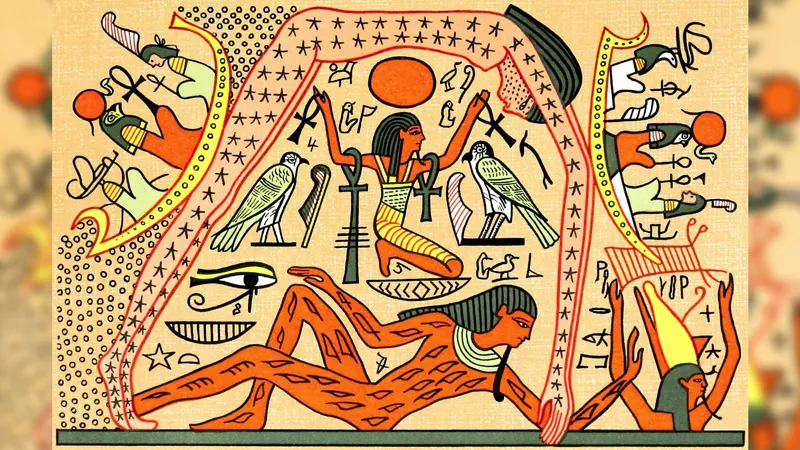
Ancient Egyptian Coffins May Hold Secrets of the Milky Way, Astrophysicist Reveals!
2025-05-01
Author: Wei Ling
Unlocking the Secrets of the Cosmos
New research is shedding light on an astounding celestial connection drawn by the ancient Egyptians: the Milky Way galaxy. This intriguing possibility arises from an in-depth analysis of the vivid depictions of Nut, the Egyptian sky goddess.
A Stunning Discovery
Astrophysicist Or Graur examined 125 illustrations of Nut found on 555 ancient coffins dating back nearly 5,000 years. Among these depictions, a select few reveal a mysterious black curve intersecting Nut's star-speckled body. According to Graur, this curve may represent the Great Rift—a dark band of cosmic dust slicing through the brilliance of our galaxy.
As Graur, an esteemed associate professor at the University of Portsmouth, highlights, "The similarity between ancient art and modern photographs of the Milky Way is striking." This revelation prompts a re-evaluation of how ancient cultures viewed the cosmos.
Mythology Meets Astronomy
In these ancient carvings, Nut is portrayed as a protective dome arching over the Earth god Geb. With her limbs stretching to the horizon, she embodies the very sky itself. Nut's nightly ritual of swallowing the sun god Ra only to give birth to him once again at dawn illustrates the concept of the solar cycle—a core element of Egyptian mythology.
Cloaked in stars, Nut symbolizes the night sky, and in some instances, her form seems to mirror the shimmering arc of the Milky Way as it arches above our world.
Connecting the Dots—but Not the Whole Picture
However, Graur emphasizes a vital distinction: While there is a notable alignment between Nut and the Milky Way, they are not interchangeable concepts. The goddess is not consistently depicted with the distinctive dark curve thought to symbolize the Great Rift.
"Nut is not merely an embodiment of the Milky Way," Graur clarifies. "Rather, the Milky Way is just one celestial feature that adorns her in her role as the sky goddess."




 Brasil (PT)
Brasil (PT)
 Canada (EN)
Canada (EN)
 Chile (ES)
Chile (ES)
 Česko (CS)
Česko (CS)
 대한민국 (KO)
대한민국 (KO)
 España (ES)
España (ES)
 France (FR)
France (FR)
 Hong Kong (EN)
Hong Kong (EN)
 Italia (IT)
Italia (IT)
 日本 (JA)
日本 (JA)
 Magyarország (HU)
Magyarország (HU)
 Norge (NO)
Norge (NO)
 Polska (PL)
Polska (PL)
 Schweiz (DE)
Schweiz (DE)
 Singapore (EN)
Singapore (EN)
 Sverige (SV)
Sverige (SV)
 Suomi (FI)
Suomi (FI)
 Türkiye (TR)
Türkiye (TR)
 الإمارات العربية المتحدة (AR)
الإمارات العربية المتحدة (AR)